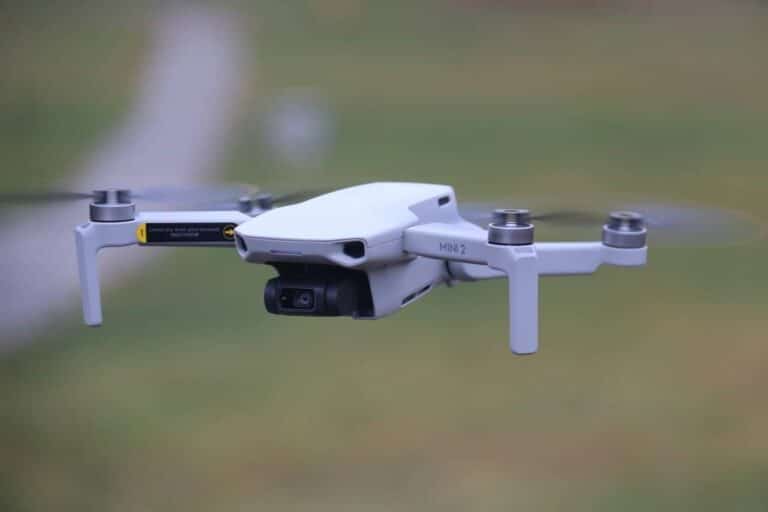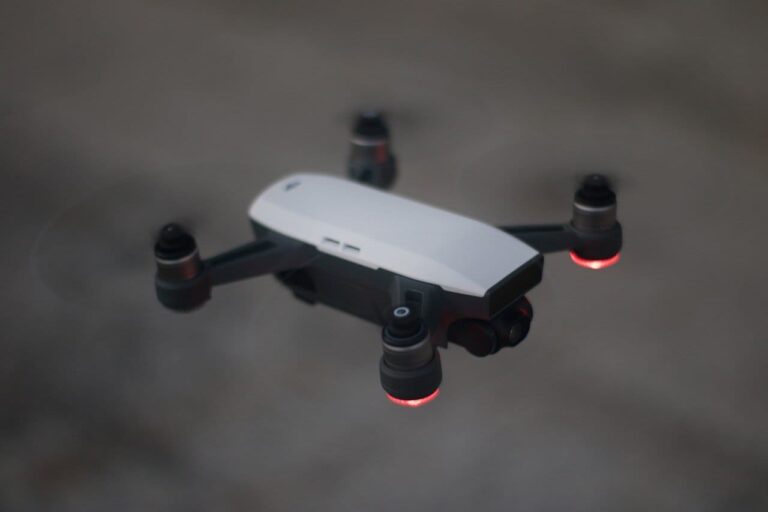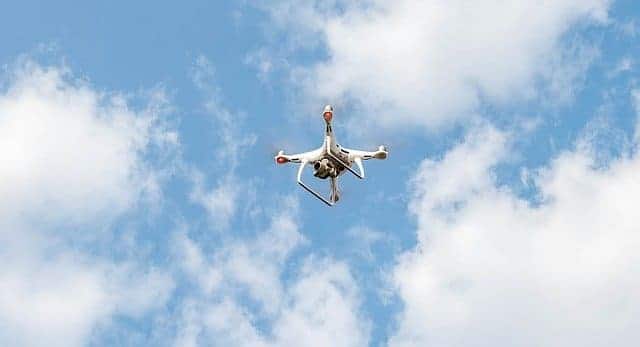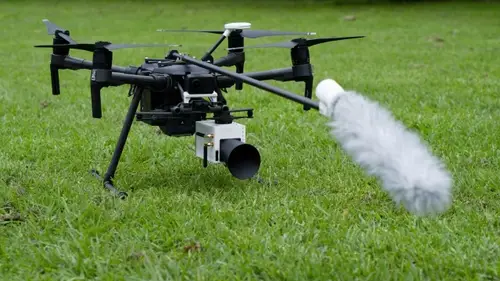Are Drones Waterproof? Can you fly them while it is raining

Note: it is inadvisable and considered irresponsible activity by the FAA to operate your drone while it is raining, and this article is not factual it is just some experiments I have had trough out the years of flying drones.
As a drone enthusiast, I love asking questions, and one question I asked was are drones waterproof?, after a series of experiments and research here is what I found-
Most consumer-level drones on the market are not waterproof, they often have a cooling system that intakes air when flying, which can also draw water causing a system failure making the drone inoperable and causing it to crash. Water can also cause corrosion which can eventually damage the drone permanently.
You can waterproof a drone using a $10 silicone conformal coating
Are drones waterproof?
For something to be called waterproof, it has to be fully submerged in water and stay fully functional afterward, so as of right now drones are not waterproof.
However, no one is trying to go scuba diving with their drone most people just want to know if they can fly their drone while it is raining, or want to know what happens if their drone landed on water accidentally right?
So in that sense, we can say that most higher-end drones, like most drones from DJI and Autel, are water-resistant to some degree, but you should understand that waterproof and water-resistant are far from each other on the spectrum.
I don’t want to spend a lot of time talking about the difference between waterproof and water-resistant because every blogger likes to talk about their differences and I am sure you have read at least 5 times
one thing I want to clarify is water-resistant electronics can not be submerged in water for a prolonged time! and can be damaged if so.
Anyways to avoid complications we can stop using vague terms such as ‘water resistant’ and ‘waterproof, and instead talk about IP ratings.
Drone IP Ratings
The IP Code, or Ingress Protection Code rates the degree of protection provided by mechanical casings and electrical enclosures against intrusion, dust, accidental contact, and water.
wikipedia
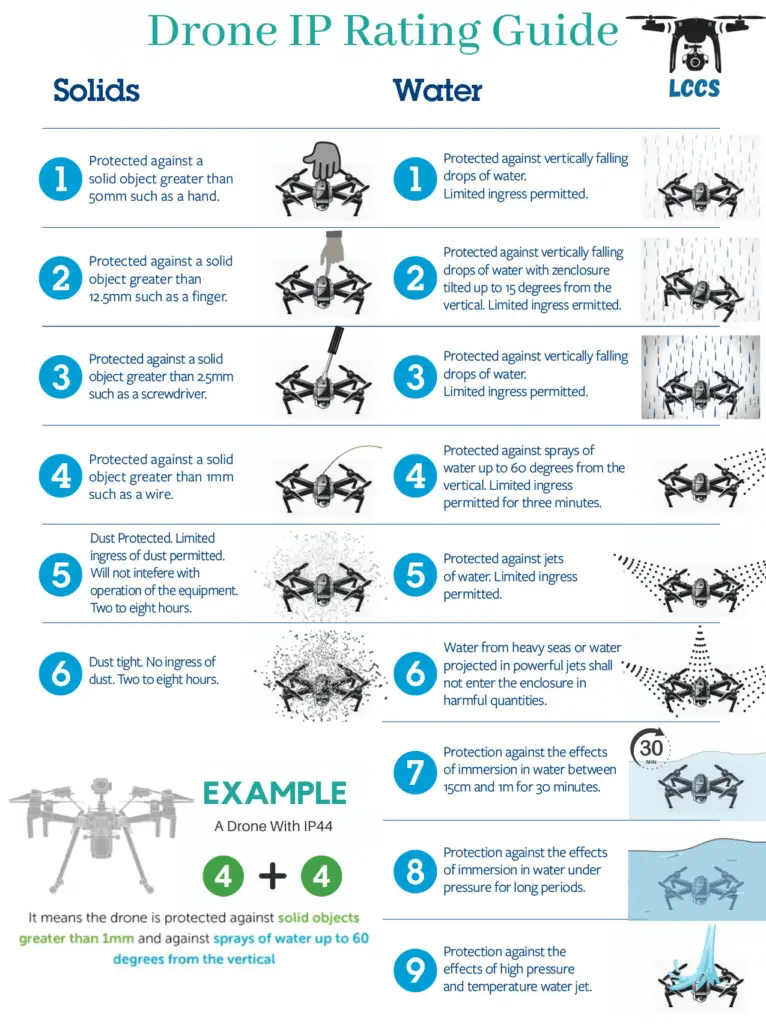
A high IP rating implies the motors are fully enclosed, and the internal components are protected against dust and rain, Which is important if you’re looking to fly your drone in rain, near water bodies with strong turbulence, or in any situation where weather conditions might change quickly.
You might also come across IP ratings such as “IPx3 or IPx4” when looking to buy waterproof drones, this actually means the drone is only rated for water.
Can you fly a drone in the rain?
According to drone manufacturers, you can not fly drones while it is raining, however, manufacturers like to play safe and tell their customers far below what their product is capable of, to avoid complications and lawsuits.
I have been able to fly different drones from different companies in heavy rain drones from phantom 3 and spark to Mavic 3 and so did 100s of other people you can watch on youtube.
Now when it is raining, the vent of the drone is what makes it vulnerable to water damage. This vent is what allows drones to breathe to prevent overheating, but is usually the weak link.
But thankfully the vent is not on the top of the drone, it is usually located on the front side just like cars, and can be under the drone.
Depending on where the vent is located the angle at which the rain falls on the drone has a significant influence.
If the vent is located on the front for instance on DJI Mavic Pro, vertically falling rain will have the least effect, because the rain hits the vent at a 90-degree angle.
If the vent is located under the drone for instance on DJI phantom 4, the direction of the rain will not have a significant effect considering the drone is just hovering parallel to the rain.
The thing is even if the vent is located under the drone, the drone will have a tilt as you accelerate, so rain particles that are going sideways will have more chance to get into the drone.
So, ideally, we want vertically falling rain as it is less likely to affect the drone.
In what kind of situation is rain likely to go into your drone?
- Strong wind– If there is a strong wind, raindrops will be scattered into much smaller water particles, on top of that they will be blowing at a more horizontal angle. For instance, a drone that is rated ipx2 will be able to handle a light shower but in windy situations even light showers become dangorus beacuse the water particles will be going side ways.
- If the drone is flying at a high speed– Flying a drone at a high speed is just like when there is horizontal rain because your drone is going at a certain speed it will hit the raindrops.
- If the drone is flying at a steep angle to the rain– drones are the most vulnerable when flying at a steep angle to the rain or in other words when decreasing altitude at a high speed or doing stunts by flipping the drone upside down.
So if you want to fly your drone while it’s raining, you want to fly it at a low velocity and when the wind is calm, and you should never try stunts while it’s raining!
What are the challenges when flying a drone in the rain
Besides the fact that you are risking your drone to water damage there are several other challenges if you want to fly your drone in the rain
Keeping your drone in Visual Line Of Sight
When operating sUAS (small unmanned aircraft system) Federal Aviation Administration, keeping them in VLOS at all times.
VOLS(Visual Line Of Sight), is typically 500 meters from the pilot, and it significantly decreases in harsh conditions such as heavy rainfall, and hail, which can make it difficult to operate UAVs.
*Note: never use fpv while it is raining!*
Electrical components
If Precipitation gets inside a drone mid-flight it can ruin electrical components, such as the motherboard electronic speed controller or the power distribution board which is often on the motherboard which can lead to a crash.
Water can also cause corrosion in the long term which can damage the drone irreversibly.
Vision sensors
Most drones have sensors, the ones that can be affected by rain are vision sensors. vision sensors are optical sensors that help with stabilization and obstacle avoidance.
When it is raining the sensors are not able to function properly which makes it hard for both the drone and the operator to fly the drone properly.
Legal issues
There is no law against flying in rain in august of 2021 which is when I am writing this article. however, FAA might do it in the near future
Even though there is no law against flying in the rain, F.A.A advocates operating in a careful manner and it can be considered as a careless thing to operate a drone while it is raining.
Not only that but if water gets into your drone it can cause a short circuit(A short circuit is when current travels along an unintended path with no or very low electrical impedance), if that happens your drone can fall from the sky just like a brick and that could cause problems to the point where it can cause property and/or physical damage and/or complicated legal issues.
Controller safety
If you fly a drone in rain it is best to keep the controller out of the rain because if the controller gets damaged it can lead to the same results which is a crash
Does DJI make waterproof drones
DJI does not make any waterproof drones except DJI Agras and DJI M SERIES, and they are both made for different applications.
The reason DJI does not make waterproof drones is that it is essential for a drone to have a venting system and with a vent there is an opening, with an opening there is a way for water to go in.
However, in my opinion, Some drones from DJI such as Phantom 4 and the new Mavic 3, have a good level of water resistance.
| DRONES | IP RATINGS |
|---|---|
| DJI M 200 SERIES | IP43 |
| Mavic PRO 1 and 2 | 0 |
| DJI Phantom 4 | maybe? |
| DJI Agras | IP54 |
| DJI Mini | 0 |
| DJI FPV | Unspecified |
| Mavic 3 | Maybe? |
Unspecified doesn’t actually mean the drone has zero protection, it means DJI will not be taking responsibility for any water damage.
If you were to ask me to rate phantom 4 or Mavic 3 on the Ingress Protection scale I would give them more than ip32 but don’t quote me on that it is just an opinion.
The rest of DJI drones can not be flown in rain at least according to DJI, especially Mavics.
By the way, I have flown my Mavic mini in the rain check this article out if to see how it went.
How to waterproof your drone
Even though you can not completely waterproof a drone there are 2 popular and somewhat effective ways drone pilots use to prepare for operating in rain.
The first and the easiest is by using a wetsuit to cover sensitive parts.
Neoprene Wetsuits
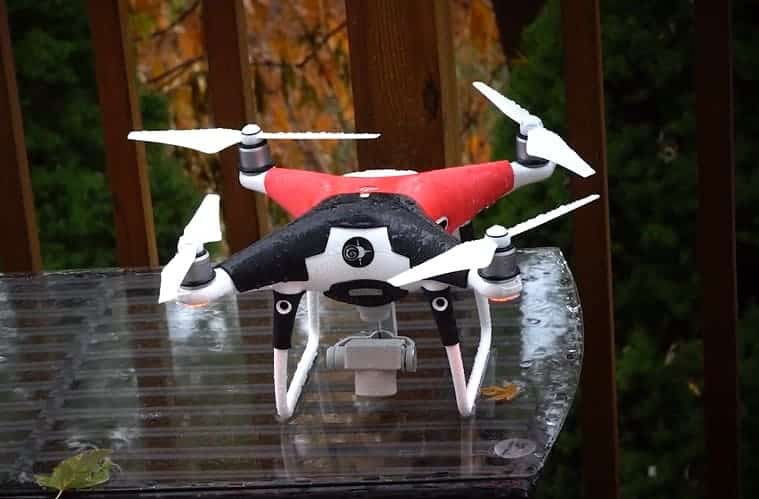
Wetsuits for drones are becoming more and more popular drone enthusiast community. If you haven’t seen one before they are just like the ones people use for diving but for drones.
I personally am not a big fan but I have tried them on a couple of my drones and I have been able to safely fly in light rain quite a few times.
However, they are expensive and you should also understand they are not going to waterproof your drone completely they just cover some sensitive parts such as the battery
The second which I would say is better is by using a silicone conformal coating.
Silicone conformal coating
Using silicone conformal coating is the safest way to waterproof electronics.
waterproofing drones with a silicone conformal coating is very easy, however, by doing so you can void your warranty.
anyways what you do is remove the battery then remove the frame then apply a thin layer of Silicone on every circuit board then just like that you are good to go for months.
What is The Best waterproof drone on the market
Swellpro Splash 4 Waterproof Drone
If you really find use in investing in a waterproof drone the best waterproof drone, in my opinion, is Swellpro Splash 4. it is not integrated and easy to use like a DJI drone but it is fairly strong, fast, and weather-resistant. On top of all this, it’s equipped with a solid 4K camera and a payload release function so you can easily drop fish bait, life jackets, or other small items.
I am not into drone finishing but it is used for that purpose and it can reach up to a speed of 20m/S.
The quadcopter itself is equipped with a powerful 5,200 mAh LiHV battery that guarantees 20 to 23 minutes of flying time with steady operation throughout. As for the controller, it works with a single 1,800 mAh LiPo battery.
So what are someuseful feauters on this drone?
- It is capable of carrying and releasing the payload (fish bait or life jacket)
- it is rated IP67
- Equipped with a high-quality 4K camera and a 3-axis gimbal
- comes with a beautiful High-quality carrying case
- One key return function
SPECS
- 4K camera and a 3-axis gimbal
- IP67
- Flight Time: 25-30 minutes
- Range: 5KM
- Max Speed: 44.7 miles per hour
- Camera: Yes, 4K on a 3-Axis Gimbal
- Charging Time: 90 minutes
- Battery (Drone): 5,200 mAh LiHV
- Battery (Controller): 7.4V 1,800 mAh LiPo
- Material: ABS Plastic (3mm, reinforced)
- Weight: 3.19 pounds (drone) + 1.23 pounds (battery)
- Dimensions: 17.7 inches (diagonal)

